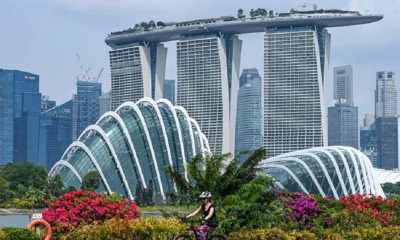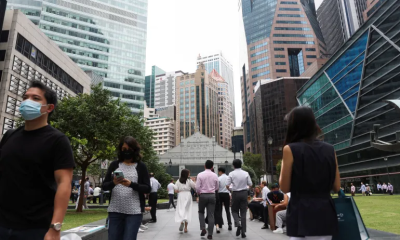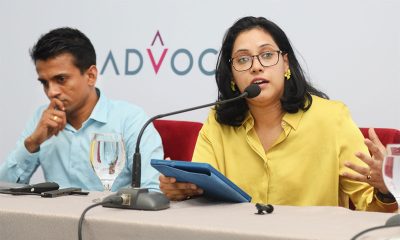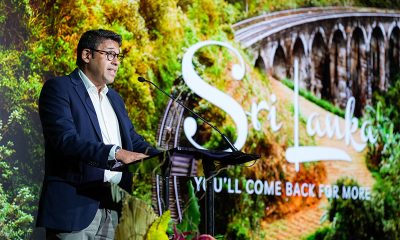Opinion
Palm oil ban ill-conceived

Open letter to the President
Whilst appreciating and congratulating Your Excellency on much of the new thrusts proposed in the policy statement, the writer was thoroughly dismayed by your decision to totally ban oil palm cultivation. By contrast, for example, Premier Narendra Modi, two years ago, on the advice of the Technology Commission of India (NITIAayog), decided to expand the cultivation of oil palm in India to 2 billion hectares to meet the national vegetable oil demand, in fact, replacing some low income generating arable crops. Irrigated lands are being used for part of the oil palm cultivations. It would appear that you have not consulted appropriate technocrats and academics in making this vitally important decision. I should kindly urge Your Excellency to also create a similar body as that of India here, a National Policy Commission of experts, to advise on policy matters of national interest.
It would appear that you were driven to this decision largely by the outcry of villagers living in the oil palm cultivation areas of the Southern Province that oil palm is the cause of drying of water bodies in their settlements, and some highly biased so called ‘environmentalists’, who have failed to look at the total picture relating to this highly productive and most profitable oil crop. It is the number one and most widely used global vegetable oil, producing 42% of the global oil demand from only 14.8 million ha as against soybean, the number two, which produces only 29.8%of the global oil demand from 103.8 million ha! Economic benefits of oil palm far outweigh that of coconut, tea and rubber in that comparative annual returns/ha for raw produce being Rs 612,0000, 175,000, 88,000 and 80,000 respectively, as per an estimate made by some scientists.
Misleading CEA report
Unfortunately, a scientifically highly erroneous report produced by the Central Environmental Authority (CEA) on the matter added ‘fuel to the villagers’ fire’! The report has been heavily criticised by the Coconut Research Institute and numerous other independent well-informed scientists. However, the criticisms had little impact on the Yahapalana regime which, having suspended its initial decision to expand the oil palm cultivation to 20,000ha, vacillated for years without generating a final decision!
The CEA supported the contention that oil palm dries up the soil, incorrectly arguing that whereas a rubber tree transpires only 63 litres/day, oil palm transpires 500-600 litres; the oft quoted figures, however, are 1,300 and 1100 mm/year for oil palm and rubber respectively, in the literature, or 120l/rubber tree and 300l/oil palm tree/day. The mean annual rainfall in the wet zone, where both these crops are grown, is as high as 3000 mm, well in excess of the crop requirements! The CEA seems to be unaware that evapo-transpiration rates of crops are calculated on unit area basis and not per tree or plant basis! Whereas the standard tree density of rubber is 520/ha that of oil palm is only 143, implying then that the two crops transpire comparable amounts of water per unit area of land based on our above cited per tree values. Furthermore the reported green water footprint of oil palm, that is the component of water received from precipitation that is stored in the root zone of the soil and is evaporated, transpired or incorporated into plants, is 19,148 cubic metres/ha for oil palm as against 32,410 for rubber.
It is more than evident that over the years, global warming leading to climatic changes as well as increased water use by the increasing population caused this situation. In my own experience, a beautiful stream that ran across my farm in Kandy which I bought in 1992, dried over the years and by 2015 even traces of its existence disappeared! As excessive water consumption is the main argument against oil palm cultivation, it is vital that a hydrological study be conducted, comparing history and current status of water bodies in an exclusively rubber growing area, as against an oil palm areas in the wet zone to convince the concerned parties.
Coming back to the CEA report referred to above, some 12 points had been cited there critical of oil palm, but nearly all of them have been refuted by the CRI, the organization mandated for R & D on oil palm and a host of independent scientists well versed in the science of oil palm. It is unfortunate that you failed to consult them before making the vital decision.
Palm oil and health
Some concern has been expressed over some bi-products formed during palm oil processing supposed to be carcinogenic, but the latest research has established that consuming palm oil in moderation hardly poses a health risk. Whilst some saturated fatty acids in palm oil may be cholesterol elevating, coconut oil it can be argued to be worse in that regard, in that the cholesterol elevating saturated fatty acid content is more. Of course coconut oil has numerous health benefit too, and although it was downgraded as an ‘artery-clogging tropical oil’, several decades ago, it has now become ‘the darling oil of the west’. Further, apart from others, the high (38%) monounsaturated fat content in palm oil has a distinct health benefit, in that it decreases the LDL (bad) cholesterol.
GMOA’s letter
It is ridiculous that the GMOA, which often pokes its nose into matters that it is not thoroughly conversant with, has thanked you for banning oil palm. Have they studied all aspects of the issue: economics, environment and health in-depth before making such utterances? I should refer to an exhaustive review that appeared in an issue of the journal ‘Nutrients’, 2019, on the subject of oil palm by Eva Gestiro and nine co-authors which has discussed the health effects and other matters thoroughly. On a previous occasion too the GMOA had strongly advocated reverting to traditional rice varieties, little realising that they yield only 25-30% of the new improved varieties; and in doing so we will be compelled to import bulk of our rice requirement! Moreover, we have many new rice varieties with similar health and nutritional benefits as the traditional ones, but yielding several fold more!
Alternative lands for oil palm
or other uses
There are some 60,000 ha of uncultivated paddy fields essentially in the wet zone which can be used for other purposes. They are left fallow as returns on investment in rice farming are low. One option is possibly oil palm cultivation, after draining the excess water. In such lands the excess water could be collected in ponds at the bottom of the catena and used for fish culture or irrigation. Raised beds can be prepared, as done for cultivation of coconut in Thailand and Indonesia, in highly ill-drained soils, and used for coconut, oil palm or market gardening. The current provisions of the Agrarian Development Act prohibit alternative use of these lands, but, surely, the Act can be amended.
Coconut oil alternative
It has been suggested by many that we should promote coconut oil as an alternative to palm oil, and the extent under coconut be expanded for the purpose. At the current mean national yield of coconut oil (0.8 M/ha) and the global mean palm oil yield of 3.8-4.0 Mt/ha, we would need five times more land to produce coconut oil than palm oil; and where is the land? With global warming and air temperatures rising, especially in the dry months in the dry zone, there is a serious problem of pollen germination and nut setting in coconut in this area. Hence land expansion for coconut is very limited therein. There is little or no land in the intermediate and wet zones for additional coconut growing. One option, however, appears to be cultivation of coconut as a shade tree for tea in the low and mid countries, and the CRI & TRI research has established that this is feasible. The demand, however, for both virgin and conventional coconut oils appears to have decreased since 2015, whereas that for coconut water is rapidly increasing. In fact the forecast for coconut water demand is to double over the next five years from 2. 25 to 4.5 billion USD. Consequently, the demand for our king coconut is growing, and it would appear more prudent to cultivate king coconut in available lands than producing nuts or oil!
Moving totally to organic farming
Promoting organic farming as far as possible is desirable, but achieving the above target stated in your speech is far- fetched, given the fact that global organic farm cover is increasing only by about 10% of its current extent, which is only 2% of the total global farm cover! Of this 66% is in pastures, and only the balance is in crops! There is much ongoing research in organic farming, especially in the field of microbial fertilizers. However, widely applicable technologies are yet to come. As regards microbial fertilizers, the soil medium should have the nutrients for effective uptake by microbes, implying that the soil should anyway be replenished regularly with nutrients, chemically or organically, except for nitrogen, which legumes and certain other crops can fix from the atmosphere.
So conventional farming cannot be easily replaced. What is more important in the short term is to correct the shortcomings thereof. One important area is judicious use of agrochemicals for which a massive farmer training effort is needed. This necessitates an effective extension service, the current one being in shambles! So please get the government to address this issue. At the same time research and technology output is rapidly declining, mainly because qualified technocrats from research institutes are leaving for greener pastures, especially to the universities where the total remuneration package is more than double for many comparable posts. This lateral brain drain now appears to be more serious than the vertical!
We trust you would give serious consideration to the issues cited above.
Dr PARAKRAMA WAIDYANATHA
Opinion
Dr A. T. Ariyaratne, the most important person for all time
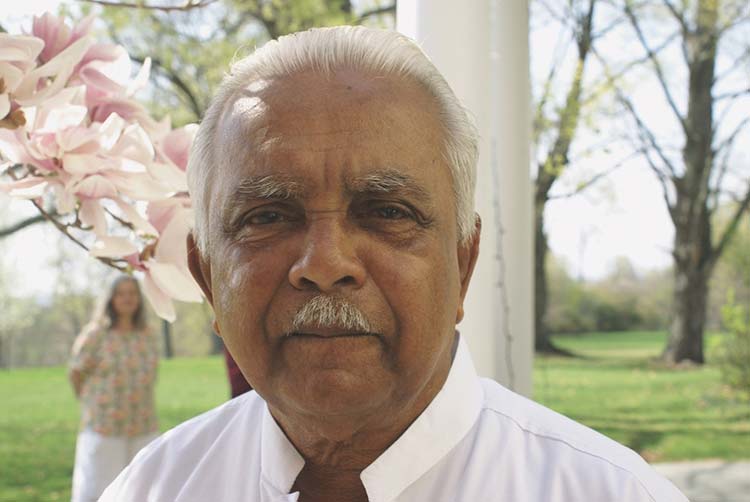
Appreciation:
by Jehan Perera
The government’s decision to conduct the funeral of Dr A T Ariyaratne with state honours is a recognition of the contribution that the founder of the Sarvodaya Movement made to the country over the past 65 years when he set up the organization. Concepts he pioneered such as Shramadana (donation of labour), Gramodaya (village awakening) and Sarvodaya (the wellbeing of all) are today part and parcel of the mainstream of Sri Lanka’s civil and political life. His creative use of traditional practices and belief systems enabled the Sarvodaya Movement to become an organic part of the country’s development process. The great contribution that Dr Ariyaratne made was to mainstream not only traditional community-oriented practices like Shramadana, but also to infuse liberal values such as pluralism and equality into civil society that enabled its spread to the four corners of the country.
Dr Ariyaratne infused the Sinhala-Buddhist culture, from where his thought and work started, as a teacher in one of Colombo’s premier Buddhist schools, Nalanda College, with values of sharing and mutual respect that reached out to other communitie in a society wracked by religious, ethnic, caste and class divisions. The Sarvodaya Movement under his leadership became a magnet for young people who wanted to contribute to the upliftment of their societies.
Many of the leaders of civil society organisations today had their period of initiation at the side of Dr Ariyaratne, who was called Loku Sir. I was one of those who worked with him and was influenced by his thinking. Three concepts he believed in are of perennial importance. First, that development needs to be for the wellbeing of all, not the wellbeing of the majority or of a minority. Second, that development is not only about economic development, but also about social, cultural, moral, spiritual and political development. Third, to ensure development from below, by decentralising power and resources to the lowest level possible, which to him was the village community.
Dr Ariyaratne was the quintessential civil society leader, not wielding state or political power, but the power that comes from ideas and the ability to demonstrate what is possible at the micro level so that the state could replicate it at the macro level. Today, there is no place that the Sarvodaya Movement has not touched in the form of a development-oriented activity or the presence of a community worker who has not gone through at least one of its trainings. In the depths of today’s despair and economic collapse, we can only imagine the difference if even one of Sri Lanka’s many governments over the past 65 years had entrusted its national development programme to this visionary leader.
He once related to me a story to illuminate the priorities one should have in life. It was drawn from the great Russian novelist Tolstoy. The story was about a king who wanted the answer to three questions—what is the most important time in a person’s life? Who is the most important person? What is the most important thing to do? Wise (and not-so-wise) persons he questioned gave many and varied answers. Some said the time of birth (astrology), the father or mother, earning well, as their answers to these three questions. Tolstoy’s answer, which met with Dr Ariyaratne’s approval was—the most important time is now, the most important person is the person you are with now, and the most important thing to do is to love and serve that person. When Dr Ariyaratne engaged with undivided attention with those he was with (including myself) and held their hands as he spoke looking at their faces, he lived this story.
This poem is dedicated to Dr Ariyaratne by one whose life he touched ever so gently and kindly.
‘Tis a season of life
Of celebration
Of remembering
Of introspection,
examination
and reevaluation
For the living.
‘Tis moments relived
Lessons relearnt
Love remembered.
A passing
Is not the end
But a pause
To find meaning
In our own existence,
The infinite merges
Into the now.
–by Sumadhu Weerawarne Perera
Opinion
What is Jathika Chinthanaya?
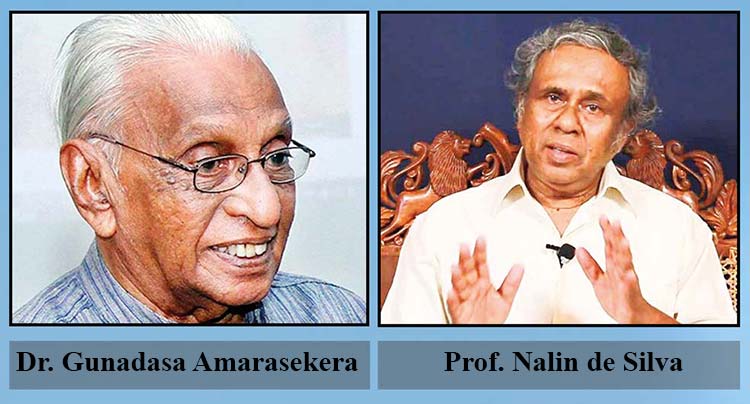
A response to the ‘Anatomy of a movement: Jathika Chinthanaya’
by Dr. Sumedha S. Amarasekara
This article is a response to the question- ‘If the failure of the left was what portended Jathika Chinthanaya, what would the sterility and decay of Jathika Chinthanaya portend?’ asked by Uditha Devapriya (UD) at the end of his article: ‘Anatomy of a movement: Jathika Chinthanaya’ (The Island 15.03.2024).
In his article, UD analyses the reasons for the failure of the Left and the fallout from it. Though he is unable to specifically tie in the ‘demise of the Left’ with the ‘relevance of Jathika Chinthanaya (JC), he maintains this to be the case, more or less on the lines that nature abhors a vacuum. Despite the title, UD does not seem to discuss the anatomy of JC, and in the absence of this, it is difficult to ascertain what UD means by ‘the JC of today is no longer the JC of yesterday’. UD instinctively sees a connection between the introduction of an open economy and the aftermath that followed, and the relevance of JC. However, UD does not seem to have been able to corelate these separate concepts meaningfully, especially in the absence of a meaningful ‘definition’ of JC.
In order to answer UD’s question, one must understand the concept of JC and then look at the Left movement in this country from that perspective, it is only then that a sensible answer can be arrived at.
JC can be best described as an ideology based on a ‘civilisational consciousness’ that we have acquired over the last two and a half thousand years. According to Anagarika Dharmapala people of this country guided by this civilisational consciousness lived ‘a contended life’. Each family had a plot of land and the forest and the grasslands were open to the public for their use. The people followed the Sangha who lived a collective life. Collectivism, and not individualism, was the aim of their existence.
Our kings who ruled our country were not tyrants or despots (in a general sense, though a few of them may have been). They were guided by an ethical code – Dasa Raja Dharma, the political /economic system that had evolved over centuries guided by a civilisational consciousness; the Buddhist ‘way of living’ that we had right up until the time we came under the dominion of the British in 1815. What is critical to grasp is that even throughout the rule of the British this ‘civilisational consciousness’ remained intact throughout the villages of this country. It is this civilisational consciousness that was flourishing in the village life that is depicted in the novels by Martin Wickremasinghe (MW) and Gunadasa Amarasekera (GA). In fact, one could argue that MW is the one who started the dialogue of JC, albeit at a subconscious level.
What happened between 1815 and our Independence in 1948, changing the destiny of our country (any many other countries) was the Industrial Revolution. To appreciate the recent (during the last 200 years) economic/political changes in the world, it is pertinent to understand that despite a myriad of scientific advances and break throughs, right up until the industrial revolution there were no real changes in the day to day living.
For example, Julius Cesare arrived in Alexandria, Egypt in 48 BC riding in a ‘horse driven vehicle’ and 2000 years later Abraham Lincoln came to the White house in 1860 still in a ‘horse driven vehicle’. The industrial revolution changed all of this in an unprecedented manner and speed. The industrial revolution-starting in the 19th century- leading to a capitalistic society swept across the world and its propagation happened in this country according to the wishes of our colonial masters, the British- their ideology, expectations and beliefs.
The traditional Left movement in Sri Lanka coincided with the development of the Left movements in the rest of the world- which were an alternative response to the ‘capitalistic society’ which followed the industrial revolution and the increasing ownership of private wealth. Central to these movements was the ideology expounded by Karl Marx (1818- 1883) who saw a socialist state as the next stage in the economic development where workers would own the production process (and benefits) which would lead to the eventual abolition of private property. It was this anti-capitalistic sentiment in the Left movement which resonated in both Gunadasa Amarasekera (GA) and Prof. Nalin de Silva (NdS), which is the explanation as to why both of them were sympathetic towards a Left cause.
In 1948 when we were granted independence; the United National Party (UNP) which came into power, was the de-facto ‘British party’ carrying out the economic policies for a capitalistic society with the Left political parties lined up against this. It was SWRD Bandaranaike who made the first conscious step away from this capitalistic model forming the Sri Lanka Freedom Party (SLFP) in search of our own model. If Anagarika Dharmapala’s movement is considered as a national awaking of the JC, the SLFP could be considered as the beginning of a political party representing the JC.
The 1970 ‘s government under Mrs. Srimavo Bandaranaike (United Front coalition with the Left movement) was a further step away from the capitalistic direction. Despite the criticisms levelled at her government, it was the first and last time that we, as a nation achieved true economic independence under the guidance of Dr. N.M. Perera as the Minister of Finance and probably had the best foreign policy we ever had-the non-aligned policy.
In 1977, under the auspices of JR Jayewardene, our country embraced an open economic policy in a diametrically opposite path, to what had been taken up to that time. The economic path was Right centred to such an extent that the traditional Left movements became obsolete. As UD states in his article it was the open economic policies of the UNP government that paved the way for the terrorist movements in the South by the JVP and the North by the LTTE. It was a country plunging into disarray that triggered the buried ‘civilizational consciousness ‘of GA in search of our JC.
This search preceded the events in 1977. The splintering of the coalition in 1975, changed the then existing political climate and it looked as if we were leaning again towards a capitalistic path- if not lost our way. It was this feeling of impending gloom and doom that pushed GA to write ‘Abuddassa yugayak’ in 1976. This was the start of his journey towards JC.
‘Anagarika Dharmapala Marxwadida’?
which came out in 1980 embraces the ideological dialogue that GA has with the Left movement/Marxism and JC. This book is probably the most significant political analysis /review that has been done with regard to the role played by Anagarika Dharmapala and provides the deeper understanding to the political movement initiated by SWRD Bandaranaike. ‘Ganaduru mediyama dakinemi arunalu’ published 10 years after the ‘1977 – dharmishta society’ signifies the completion of GA’s study of JC. It was during this time that NdS also seemed to have moved away from his Left leanings.
At that time GA saw the Janatha Vimukthi Peramuna (JVP) as an umbrella group that consisted of the educated youth of this country who were unhappy with the current politics of this country. In Ganaduru mediyama dakinemi arunalu GA discusses the ideological clashes between JC and the traditional Left/ Marxist movement in great detail and as to why they failed in this country. Ganaduru mediyama dakinemi arunalu was in fact, an invitation for this group to embrace their heritage of JC and start a new path. It is probably the concept of JC that influenced politicians such as Wimal Weerawansa who were originally with the JVP to lean away from the Left /Marxist views towards nationalism.
The mid to late 1980’s can be described as a time where there was a huge debate raging throughout the country on civilisation and civilisational consciousness. This was partly due to the opposition by the Tamil separatists (militant and otherwise) and foreign powers who were out to divide this country and the NGOs that funded them. They opposed JC on two fronts, working towards this common goal of a divided Sri Lanka. One front argued that we were all part of humanity and that in reality there was no such thing as an ethnic/national identity!
The other front took the pendulum to the other end and portrayed JC as based on the ethnic consciousness of the Sinhala people and that it is a ‘Sinhala Jathika Chinthanaya’ – an ethnic nationalism based on an ethnic consciousness. GA pointed out the inherent contradiction in the term ethnic nationalism and maintained that ethnic consciousness based on culture cannot take the place of civilisational consciousness based on the harmonious co-existence of different ‘ethnic consciousnesses’ and cultures. This is what we had prior to the advent of the foreigner. There were no clashes among the ethnic groups – no fighting among them. The fights were with the invaders.
GA and NdS had to fight hard against this misconception promoted by the NGOs. It was during this period, as a medical student, that I had the privilege of being exposed to the brilliant oratory of Prof. NdS, who was then at the Department of Mathematics of the University of Colombo. Being born in 1993, UD as well as almost all of our younger generation, unfortunately would have missed these brilliant arguments given in the style of Nagasena Wasthuwa.
The issue of a national identity had an enormous impact on the country and especially the army that was fighting the war. True the army was fighting against the LTTE, but what were they fighting for? One fights for one’s family or one’s country: and here was a situation where the people as well as the world outside were made to believe that we fighting the Tamils and this was an ethnic war.
GA, NdS as well as many other national movements worked tirelessly during this period to counteract this vicious propaganda and create a sense of nationalism. It was especially in this context that the Left movements proved to be impotent. The Left movements identified only with class. They had no inherent national identity. How does a movement that does not identify with the concept of a nation support a national cause? JC was the ideology that provided the answer to this question.
The JVP movement despite being a ‘homegrown movement’ did not appreciate this fact either.
The founders of JC were able to get their message across to the people with the backing of such movements like the Patriotic National Movement and the Manel Mal movement. It was this JC movement that gave the impetus for Mahinda Rajapakse to finally win the war against the LTTE in 2009. It is the same sentiment that gave such an enormous victory to Gotabaya Rajapaksa in 2019. The focus of the manifesto ‘saubagyaye dekma’ was ‘santhosayen inna pawulak’ – a happy family. The concept comes from Buddhism where happiness is seen as the ultimate wealth – ‘Santhutti Paramang Dhanang’. It is a concept of wealth that excludes money /ownership.
So, in response to UD’s article it can be seen that there is no JC of yesterday that is different to the JC of today. It is the same civilizational consciousness that comes through. Certainly, it can evolve over time. But time in this case needs to be measured relative to the civilization, in centuries, if not in millennia. As a civilizational consciousness, JC is not a movement- political or otherwise. It exists in us whether we like it or not. GA showed it and defined it for us, so that we could now consciously recognize it, acknowledge it and embrace it. The failure of the Left was its inability to recognize/comprehend JC -not that the failure of the Left portended JC.
And to finally answer the question raised by UD at the end of his article – what would the sterility and decay of Jathika Chinthanaya portend? In other words what would the sterility and decay of a civilizational consciousness portend? It will portend the end of a civilization. This is how civilizations get fossilized and disappear. And how nations get swept of the earth. In this case it portends the end of our nation. As GA would say, when he is in a pessimistic mood – ‘Maka ma dakinne may Jathiye, Rate awasanya widhiyatai’
Will it happen to us, to Sri Lanka? Have we reached the end?
Opinion
Massacre of innocents and hypocrisy of West

By Dr Upul Wijayawardhana
I, too, have been watching, like many millions with a conscience around the world, with a sense of helplessness, hopelessness and frustration, the indiscriminate massacre of thousands of innocent civilians, including children and the sick in Gaza by Israel Defence Forces (IDF) with the help of the West. I find it very difficult to comprehend what is worse: the persecution of a hapless group of innocents by another group which faced persecution in the past or the excuses given by leaders of the West who seem to be turning a blind eye, interrupted at times by vain gestures to indicate their disapproval! Excuses given by some of them reminds one of the well-known Sinhala saying Kanna hitunama Kabaragoyath Thlagoya venavalu which translates roughly as “When you want to eat, even a Water Monitor becomes a Land Monitor”
True, it all started with 07 October Hamas terrorist attack on Israel killed 1,139. About 300 Israelis were taken hostage. Whilst it deserved outright condemnation and a response from Israel, what is worrying is the haphazard nature of the response with glaring excesses giving the impression that Israel is hell-bent on obliterating the Gaza strip. In this venture, it is supported by USA, which seems to work on the dictum that Israel can do no wrong! Israel’s covert, and not-so-covert, plans of illegal expansion in to Palestinian territories have been legitimised by the use of its power of veto by USA, at every UN Security Council resolution.
Things started changing somewhat after the April 1st IDF drone attack on three SVU vehicles of World Central Kitchen (WCK) which killed 7 aid workers (3 British and one each of Australian, Palestinian, Polish and US-Canadian citizens) attached to the charity WCK, based in USA and run by Jose Andres, a Spanish-American chef and restaurateur. President Biden condemned the attack but the very next day USA announced further arms shipments to Israel!
Jose Andres, in addition to setting up WCK, is a professor and the founder of the Global Food Institute at George Washington University and was awarded the National Humanities Medal at a ceremony in White House in 2016. Speaking to Reuters, Andres had stated that the seven workers were “targeted deliberately” and killed “systematically, car by car” and added that the war in Gaza is “not a war against terrorism anymore” but a “war against humanity itself.” Very strong words, indeed!
Not being able to disregard this strong reaction by a respected American, President Biden had ‘strong words’ with the PM of Israel, in a telephone conversation but left it for the IDF itself to investigate the incident! IDF issued a report admitting that mistakes were made and that 2 officers were dismissed and some others warned. In response, WCK issued a statement which stated: “We demand the creation of an independent commission to investigate the killings of our WCK colleagues. The IDF cannot credibly investigate its own failure in Gaza.
It’s not enough to simply try to avoid further humanitarian deaths, which have now approached close to 200. All civilians need to be protected, and all innocent people in Gaza need to be fed and safe. And all hostages must be released”. Worryingly, the statement ends by saying that operations remain suspended.
Perhaps, this is what Israel wants; to starve the population to death! The West has remained silent, unmoved by the death over 30,000 Palestinians, mostly women and children. Hospitals have been targeted and many health care workers have been killed. As mentioned in the WCK statement, almost 200 aid-workers have sacrificed their lives in their selfless attempts to serve the oppressed which has not moved the cold stone hearts of Western leaders to any action, till the killing of the seven WCK workers as their chief has a voice!
In spite of three British aid-workers being killed, the largest number from any one country, condemnation from the British PM has been very mild, to say the least. It was reported that David Cameron, the Foreign Secretary wanted a strong response but was prevented from doing so by No.10 Downing Street! It was also reported that more than 600 lawyers, including former justices of Supreme Court had written to the government stating that weapon exports to Israel must end because the UK risks breaking international law over a “plausible risk of genocide” in Gaza. Interestingly, the British government is refusing to release the legal advice received! Of course, Israel denies genocide. It is genocide or holocaust only when it happens to them!
It was hilarious watching a news programme where one of the ministers was giving the lame excuses that stopping weapon exports to Israel serves no purpose as British sales amounted to less than a percent of Israeli arm imports. He overlooks the principle involved and it is heartening note that it is not only Sri Lankan politicians who are bereft of principles! The disgraced former PM Boris Johnson has gone a step further by stating that it is shameful to call for UK to end arm sales to Israel. Rich, coming from a man who knew no shame during the pandemic, getting fined for having parties in No. 10 Downing Street!
In fact, many lost confidence in Rishi Sunak on the day after the Rochdale by-election which was held on 29th February, won by the pro-Palestinian candidate George Galloway, which was no surprise as nearly a third of Rochdale population is Muslim. Sunak made a statement outside No. 10 waning about the rise of Islamic extremism but did not care even to mention the catastrophe in Gaza despite it being the same day that 112 died and more than 750 people were injured when IDF fired at a crowd of starving Gaza citizens chasing for morsels of food from an aid-convoy.
IDF claimed that it only fired warning shots and deaths were due to trampling but medics reported that deaths were due to gunshot injuries. Why could not he say that he would make inquiries from Israel, at least? No inquiry seems to have been held regarding this barbaric act. Subsequently, a Canadian doctor working in Gaza declared that she had seen many children shot in the head and accused IDF of targeting children. Mans inhumanity to man seems to have no bounds!
How the West deals with Israel is diametrically opposite to how they dealt with us when we fought terrorism! I do not have to go in to details of their hypocrisy, as much has been written on the subject, except to remind how UK and France sent their Foreign Ministers to rescue the Tiger leader. They were sent off with a rebuff so that the job of eradicating terrorism could be completed. Of course, we had a few traitors of our own who belittled!
I am afraid that the massacre of the innocents and the hypocrisy of the West will continue as long as it suits their purpose. Unfortunately, we live in a world devoid of fairness!
-

 News6 days ago
News6 days agoSinhala and Tamil New Year auspicious times
-

 Business6 days ago
Business6 days agoThe $2bn dirty-money case that rocked Singapore
-

 Foreign News7 days ago
Foreign News7 days agoSingapore tightens rules for expat workers with an eye on local discontent
-

 Business2 days ago
Business2 days agoSOEs seen as failing SL’s ordinary citizens
-

 News3 days ago
News3 days agoSay no to NEPF! Say no to abolishing free education!
-

 News5 days ago
News5 days ago123rd Birth anniversary of Dr S A Wickramasinghe commemorated
-

 Business2 days ago
Business2 days agoSri Lanka Tourism concludes another round of Roadshows in Australia
-

 Foreign News6 days ago
Foreign News6 days agoNigeria first country to introduce ‘revolutionary’ meningitis vaccine














